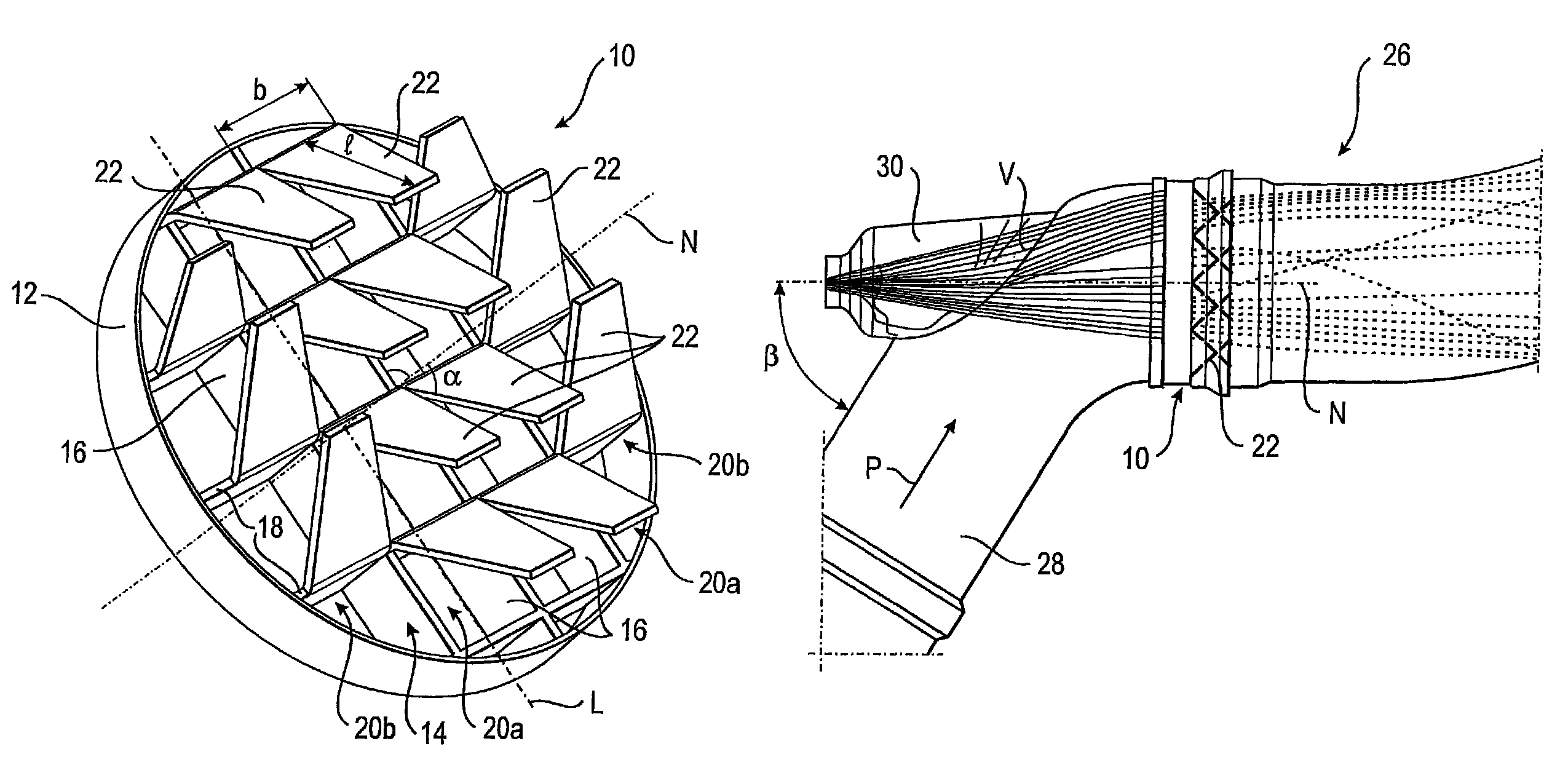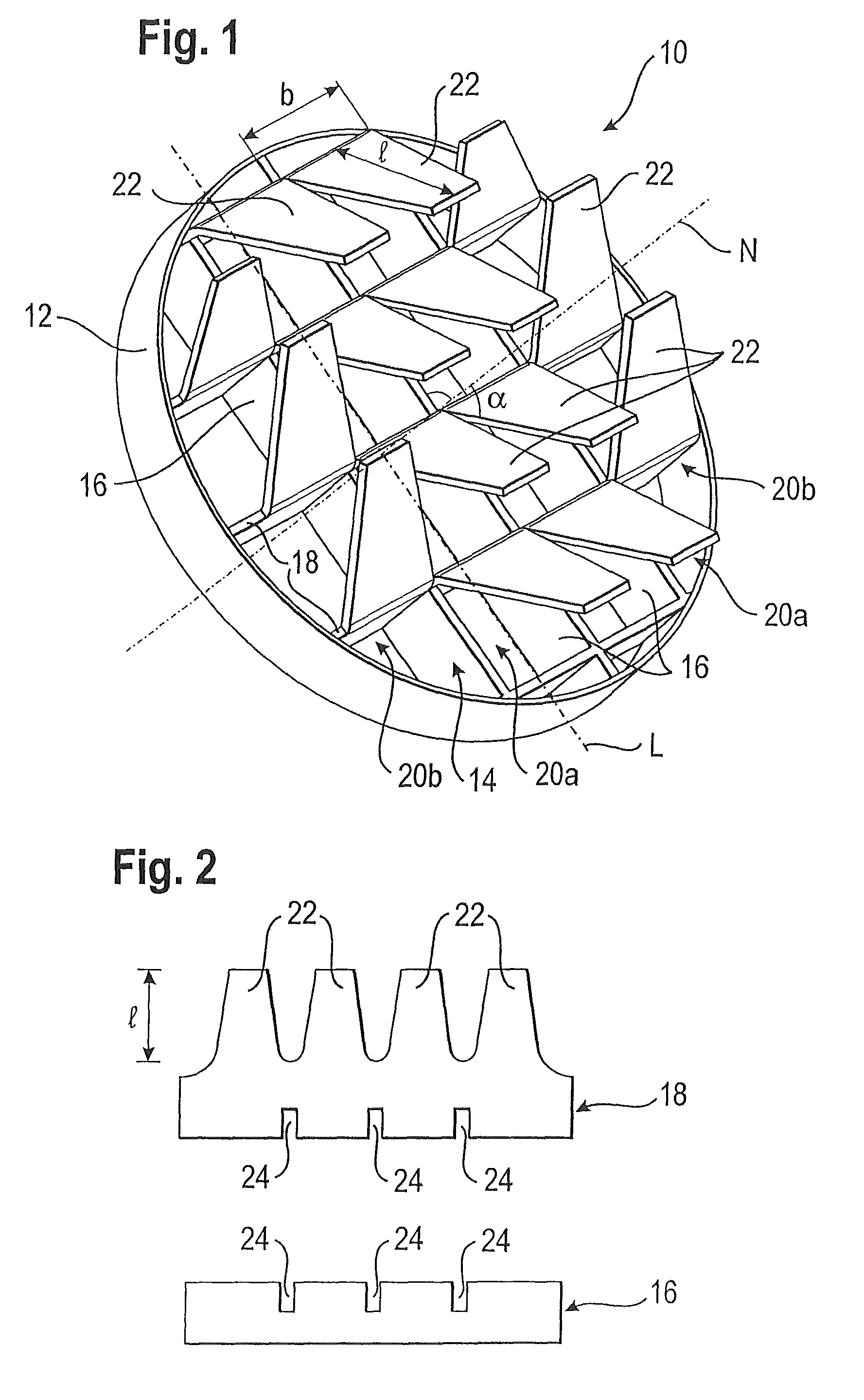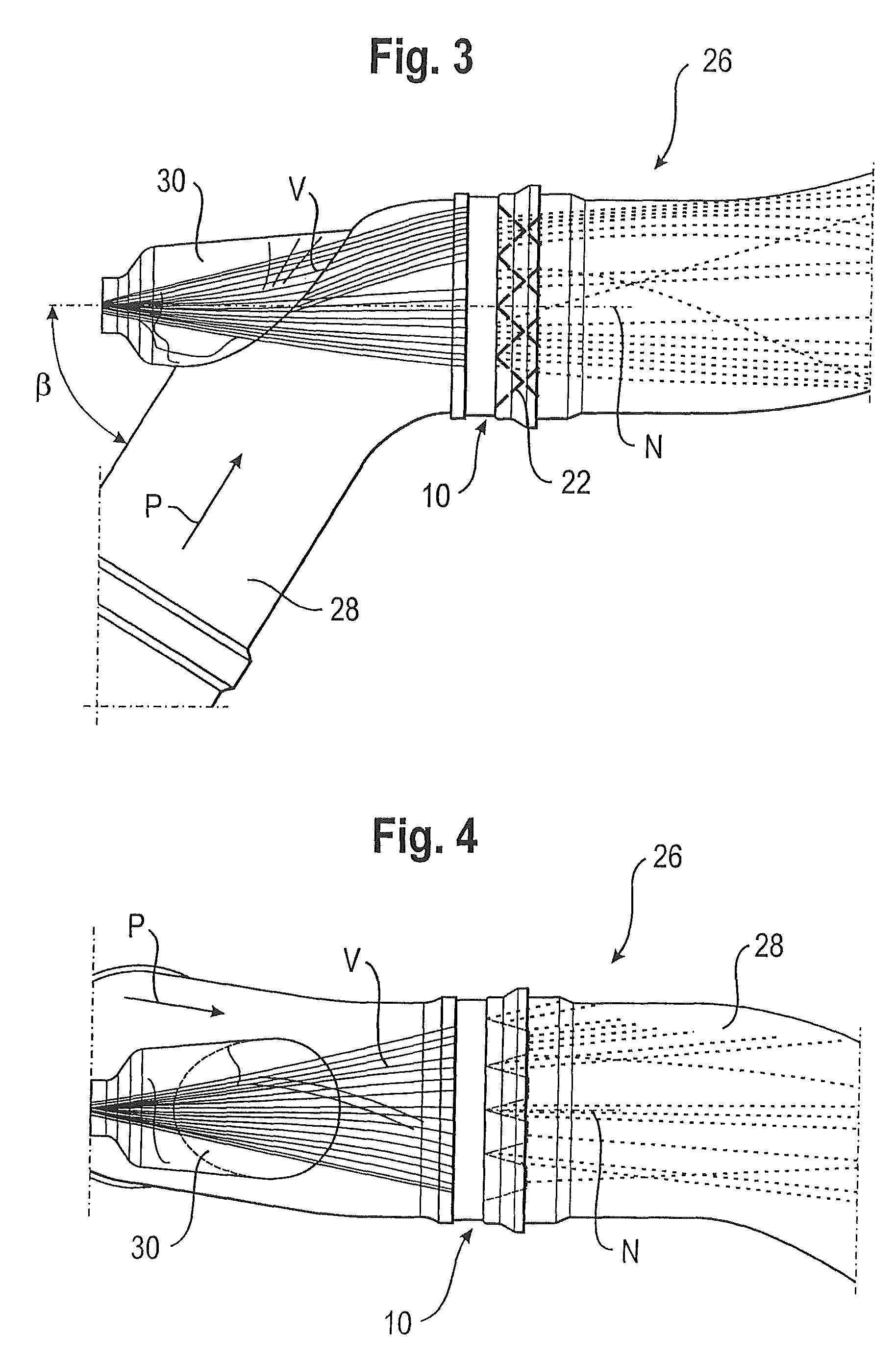Mixing element and an exhaust system for an internal combustion engine
a technology of mixing element and exhaust system, which is applied in the direction of machines/engines, mechanical equipment, transportation and packaging, etc., can solve the problems of clinging to the colder walls of the tube, affecting the mixing of the media, and affecting the mixing effect of the media
- Summary
- Abstract
- Description
- Claims
- Application Information
AI Technical Summary
Benefits of technology
Problems solved by technology
Method used
Image
Examples
Embodiment Construction
[0049]FIG. 1 shows a stationary mixing element 10 according to the invention which includes a grid 14 which is delimited by an annular frame 12 and is formed by a plurality of first webs 16 having a parallel orientation and second webs 18 arranged perpendicularly thereto. The first webs 16 define a plurality of rows 20a, 20b which are parallel to each other, the two outermost rows 20b being delimited on the outer side by the frame 12 itself. It would, of course, also be possible to configure the rows 20a, 20b so as not to be precisely parallel.
[0050]Projecting from the grid 14 is a plurality of deflector elements 22 which are attached to the second webs 18, more particularly formed in one piece therewith (and thus with the grid 14). The length 1 (FIG. 2) of the deflector elements 22 substantially corresponds to the width b of the rows 20a, 20b.
[0051]For the manufacture of the mixing element 10, the first webs 16 and the second webs 18 along with the deflector elements 22 are produc...
PUM
| Property | Measurement | Unit |
|---|---|---|
| angle of inclination | aaaaa | aaaaa |
| angle of inclination | aaaaa | aaaaa |
| angle of inclination | aaaaa | aaaaa |
Abstract
Description
Claims
Application Information
 Login to View More
Login to View More - R&D
- Intellectual Property
- Life Sciences
- Materials
- Tech Scout
- Unparalleled Data Quality
- Higher Quality Content
- 60% Fewer Hallucinations
Browse by: Latest US Patents, China's latest patents, Technical Efficacy Thesaurus, Application Domain, Technology Topic, Popular Technical Reports.
© 2025 PatSnap. All rights reserved.Legal|Privacy policy|Modern Slavery Act Transparency Statement|Sitemap|About US| Contact US: help@patsnap.com



